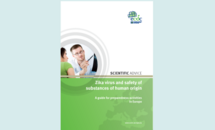Zika virus and safety of substances of human origin – A guide for preparedness activities in Europe
The objective of this document is to guide the preparation and implementation of national preparedness plans for the safety of substances of human origin during outbreaks of Zika virus infection, both in affected and non-affected areas. This document includes key elements to be considered in the risk-based decision-making process of mitigating the threats to the safety of substances of human origin posed by Zika virus. It also identifies supporting tools and information sources available at the EU level, either from ECDC or the European Commission’s Directorate-General for Health and Food Safety
Executive summary
Zika virus is mainly transmitted to humans through mosquitoes but can potentially also be transmitted through substances of human origin (SoHO) such as blood, tissue and cells.
To be able to mount a rapid response, in the event of a Zika virus outbreak in Europe, this new guide offers a set of activities that should be considered in the preparation and implementation of a national preparedness plan for the safety of SoHO.
Vytenis Andriukaitis, European Commissioner for Health and Food Safety, said: “EU legislation on the quality and safety of substances such as blood, tissues and cells, seeks to protect both donors and recipients from the transmission of viruses. To help Member States and professional establishments prevent, specifically, the possible transmission of the Zika virus via transfused blood or transplanted tissues, cells or organs, the ECDC prepared a guide of practical measures for this purpose. I very much welcome this guide and hope that it will be widely used."
ECDC Chief Scientist Mike Catchpole said: “This is a joint effort of a multi country expert team to define the measures necessary to manage the risks posed by Zika to the safety of substances of human origin. It is one of the ways in which the European Commission and ECDC offers support to the preparation and implementation of national preparedness plans for a Zika virus outbreak. It provides information and advice such as definitions of affected areas, advice on SoHO safety measures and guidance on who can do what to mitigate the consequences in case of local Zika virus transmission in Europe. It is important to assess and ensure the safety of both recipients and donors of SoHO in preventing the spread of Zika.”
The activities set out in this guide aim to assist the Member States in decision making on how to assess and manage the risks posed by Zika to the safety of SoHO. The guide identifies concrete activities to be considered at the local, national and EU level.
EU policy on substances of human origin
The EU sets minimum quality and safety standards for substances of human origin (SOHO), which include blood, tissues and cells, and organs. All EU countries are obliged to comply with the standards laid down in EU legislation. The main topics covered by the legislation are authorisation requirements for the SOHO establishments, donor selection and testing, inspections and other control mechanisms and traceability and vigilance requirements.





